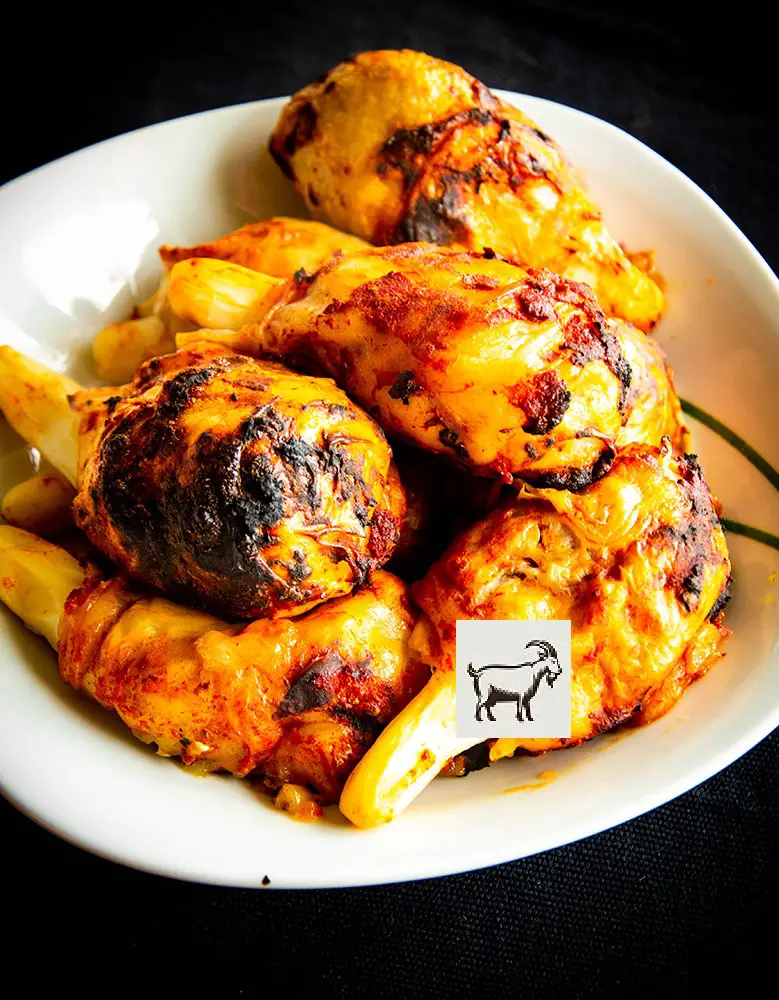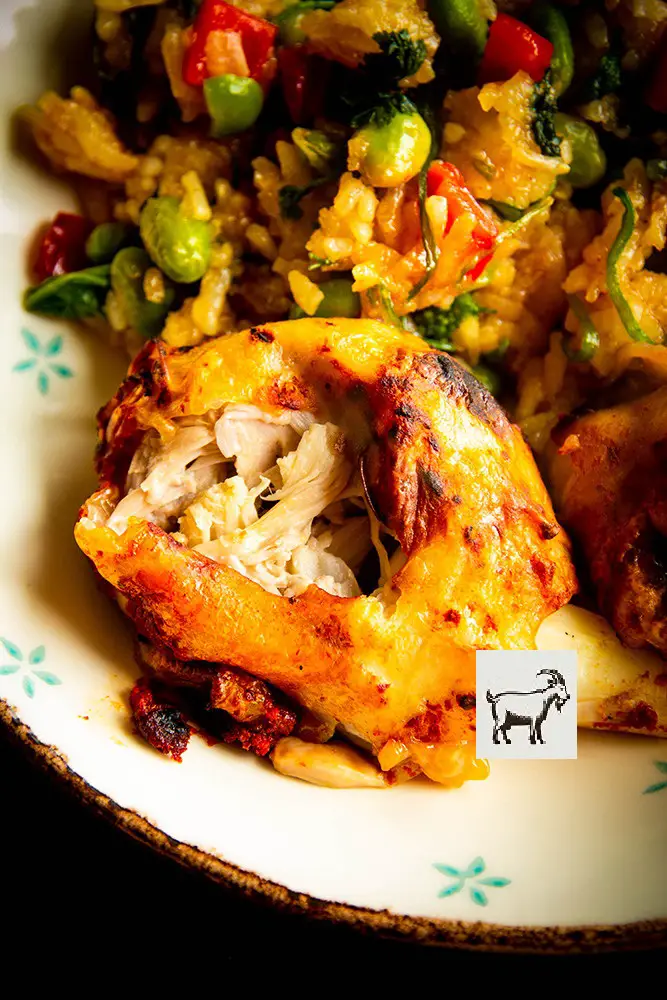🧑🍳 Stuff to Know Before You Start
Jackfruit Magic: Canned jackfruit transforms into a meat-like texture when hand-squeezed and cooked properly. Be sure to drain it well before you start.
Bone Substitute: Cauliflower stalks make clever “bones.” You can also use thick stems of broccoli or even sugarcane if available.
Rice Paper Wrapping: Once softened in water, rice paper can be fragile. Wrap gently and consider tying the ends with a bit of kitchen twine to keep them together during baking.
Oven Caution: Turning the “chicken legs” can be tricky. Use tongs or carefully rotate them with a spatula to avoid tearing the rice paper.
🥄 Ingredients
- 2 cans of jackfruit (drained, squeezed)
- Cauliflower stalks (for “bones”)
- Rice paper sheets
- 2 tbsp nutritional yeast
- 2 tbsp tomato purée (or sauce of your choice)
- 1 tsp smoked paprika
📝 Step by Step
Create Meat-Like Texture
Drain 2 cans of jackfruit and squeeze the pieces by hand to break them into shreds. Boil them briefly in vegetable stock until the liquid is absorbed, making the jackfruit even juicier. Stir in 2 tbsp nutritional yeast. Let this mixture cool slightly.
Form “Chicken Legs”
Once cooled, divide the jackfruit into portions. Insert a cauliflower stalk into each portion to serve as a “bone,” then shape the jackfruit around it. Tuck these into freezer bags and freeze until firm (this helps them keep their shape).
Skin & Season
Remove the frozen “legs” from the bags. Soften a sheet of rice paper in water until pliable. Wrap it around each jackfruit leg, sealing near the stalk. Mix 2 tbsp tomato purée with 1 tsp smoked paprika (or your preferred sauce) and brush it over the “skin.”
Oven Time
Preheat your oven to about 200°C (400°F). Place the wrapped “legs” on a lightly greased tray and bake for roughly 20–25 minutes, carefully turning them a few times to ensure even crisping. If the rice paper threatens to unravel, tie it gently with a piece of kitchen string.
🍽️ How to Serve These Jackfruit Chicken Legs
- Classic Combo: Enjoy with mashed potatoes and steamed veggies for a comfort-food vibe.
- BBQ Twist: Slather them with your favorite barbecue sauce in the final 5 minutes of baking.
- Pasta Pairing: Serve with spaghetti in a simple tomato sauce if you want a carb-loaded feast.
🧠 The Science Behind Success
Freezing Step: Freezing jackfruit in the “leg” shape helps the pieces stay together when you wrap them later.
Why Cauliflower Stalks? They’re sturdy, mild in flavor, and mimic the appearance of bones without adding any strong taste.
📖 Meat-Like Texture from a Fruit?
Jackfruit is often called the “magical fruit” for plant-based cooking because of its fibrous, stringy texture. It shreds easily to imitate pulled meats or, in this case, helps you craft something that looks remarkably like chicken legs. The secret lies in draining, squeezing, boiling, then freezing—these steps transform a humble piece of fruit into a surprisingly convincing meat substitute.
Tying it all together with rice paper “skin” gives you that crispy outer layer we usually associate with fried or roasted chicken. It may take a bit of practice to keep everything in place, but the result is well worth it!
❓ Reader Questions Answered
Not necessarily. You could try wrapping the jackfruit in thin sheets of yuba (tofu skin) or even a vegan-friendly pastry. Rice paper is popular for its availability and neutral flavor.
Yes, but it’s more work. You need an unripe jackfruit (young green) so it won’t be sweet. Canned jackfruit is already prepared, which is why most people use it for convenience.
Double-wrap the “legs” with two layers of rice paper to reduce tearing. Also, try lightly oiling the baking tray or using parchment paper to minimize sticking.
Allow them to cool, then store in an airtight container in the fridge for up to 3 days. Reheat in the oven or air fryer to restore some crispiness.


